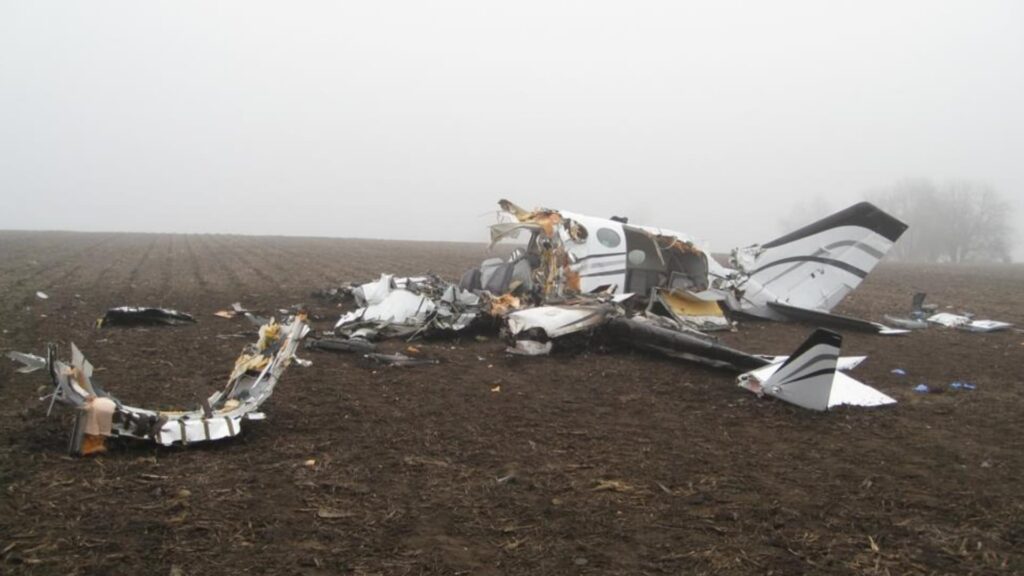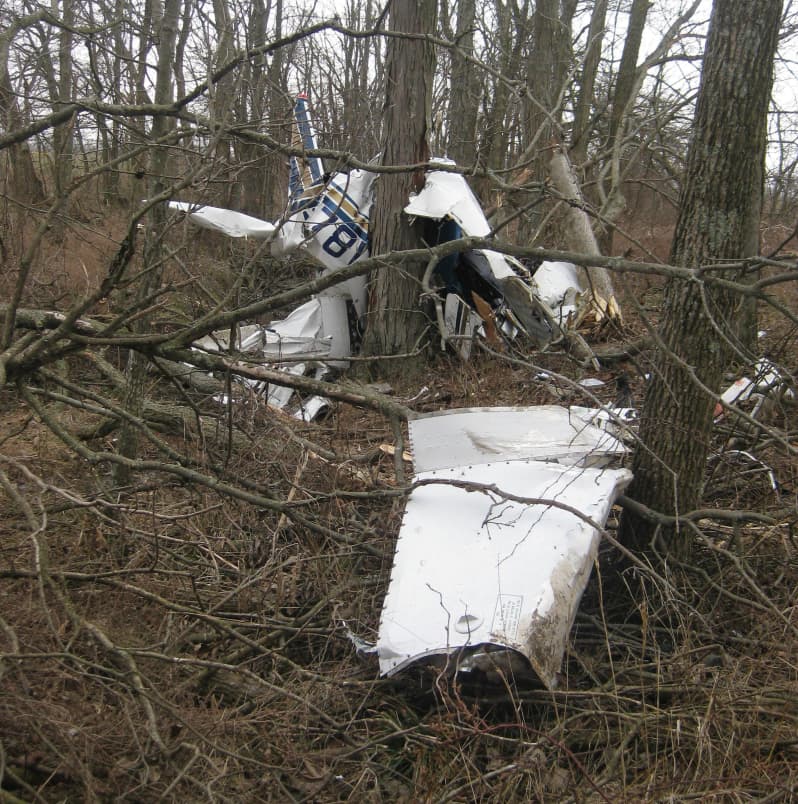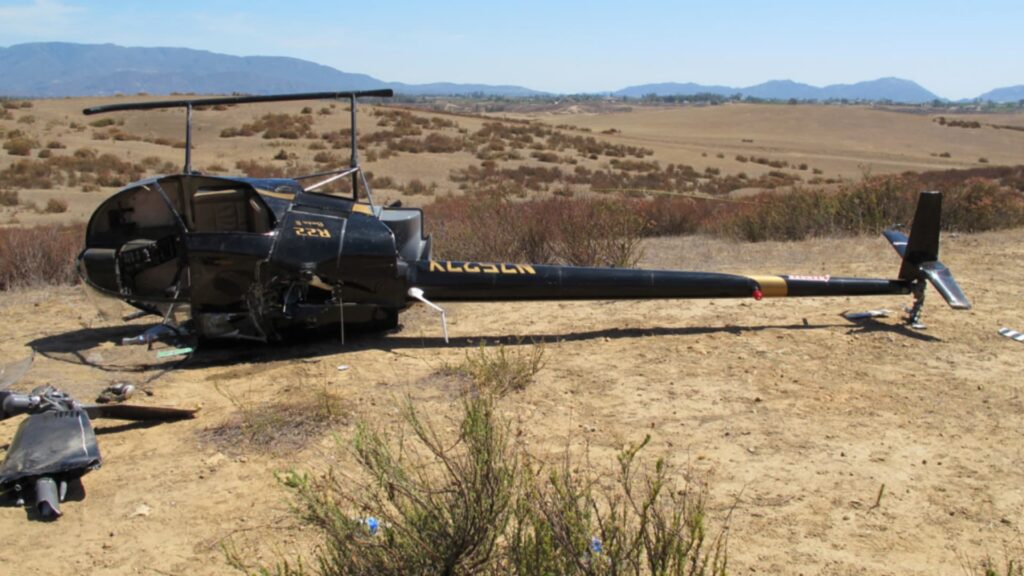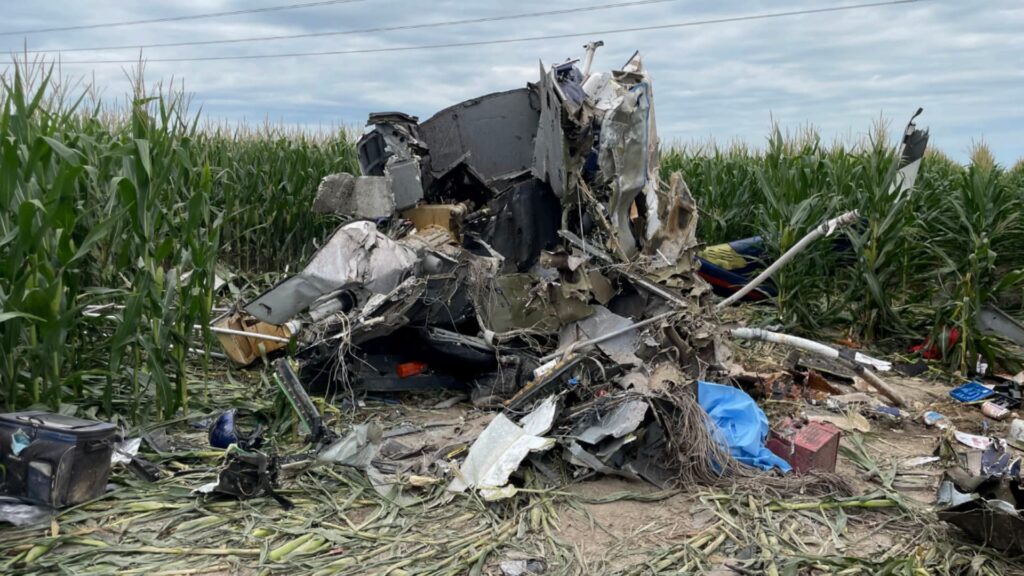A Night Flight with a Seasoned Hand
On the night of April 6, 2015, a Cessna 414A Chancellor took off from Indianapolis, Indiana, en route to Bloomington, Illinois. At the controls was a highly experienced 51-year-old airline transport pilot with over 12,100 total flight hours, 1,150 of which were in the Cessna 414A. He held an ATP certificate with ratings in multiple jets, along with instructor certificates for multi-engine, single-engine, and instrument airplanes. A true professional in the air.
Yet despite this deep well of experience, the pilot and his six passengers would never reach their destination. Just after midnight, their aircraft crashed 2.2 miles from Central Illinois Regional Airport (BMI), killing everyone on board.
The Setup: Weather, Fatigue, and High Stakes
It was a demanding night: the flight was conducted under instrument flight rules (IFR) in low visibility with overcast clouds at 200 feet and just a half-mile visibility in fog and rain. Fatigue may also have been a factor. The pilot had likely been awake for 18 hours, operating well past his usual bedtime, a situation known to impair cognitive performance.

Descent into Disarray
Approaching BMI, the pilot was cleared for an ILS approach to runway 20. However, he never properly intercepted or tracked the localizer or glideslope — critical guidance components for a precision approach in such low visibility.
A post-crash analysis showed that while the airplane’s electronic instruments indicated a valid localizer signal, the glideslope signal — which guides vertical descent — was never received. Instead, the pilot flew a descent profile consistent with a localizer-only approach, with no vertical guidance, descending below the glideslope path. Meanwhile, the aircraft drifted right of the localizer course.
About one mile from the runway, the airplane made a sharp, unplanned 90-degree left turn — not per the published missed approach procedure. This sudden deviation set the stage for disaster.
A Deadly Chain of Events
The NTSB simulation showed that the aircraft pitched erratically as it turned east, flying away from the runway in worsening control. The plane likely stalled aerodynamically, with its angle of attack exceeding the critical limit.
Investigators later found the glideslope antenna cable was inadequately secured and had likely been disconnected during the flight. This meant the cockpit never received a usable glideslope signal, and there had been no recent maintenance that might have caused the disconnection. The pilot was essentially flying blind vertically.
To make matters worse, the aircraft was loaded beyond its weight limits and had a center of gravity (CG) positioned too far aft — a dangerous combination that degrades pitch control, especially in stalls. This would have made recovery from any unusual attitude extremely difficult, even for a seasoned pilot.

Final Moments and Findings
The aircraft crashed upright in a harvested cornfield, nose-down, with no debris path — classic signs of a stall-spin accident. Both engines were producing power at impact. Instrument panel damage confirmed the pilot had been trying to manage power and control, but it was too late.
The NTSB’s probable cause boiled down to the pilot’s inability to maintain control during the approach, exacerbated by:
- Fatigue from extended wakefulness and circadian mismatch
- Increased workload from a non-functional glideslope system
- A dangerously aft CG that impaired handling
The Human Cost
This was more than a systems failure — it was a human tragedy. The pilot and his six passengers were returning from a college basketball championship game. They were friends, fathers, professionals — lives lost not to recklessness, but to a perfect storm of fatigue, system failure, and aerodynamic limits.
It’s a sobering reminder that even experienced hands are vulnerable in the right (or wrong) conditions. And it’s why continuous vigilance, adherence to procedures, and humility in the face of the machine — and Mother Nature — remain as vital as ever.
Lessons from Bloomington
This accident underscores how even highly qualified pilots can become overwhelmed when multiple risk factors stack up: fatigue, adverse weather, equipment failure, and loading issues.
Several key takeaways emerge:
- Never Assume the Equipment Will Work: The disconnected glideslope cable rendered the ILS effectively useless — a stark reminder that even small overlooked issues in avionics can have huge consequences.
- Plan for Alternatives: When the glideslope failed, the pilot likely attempted a localizer-only approach — something he hadn’t anticipated. Preparation for alternate scenarios, especially in low IMC, is critical.
- Respect the Weight and Balance Envelope: An aft CG isn’t just a paperwork problem — it changes how an airplane flies. Here, it directly impaired the pilot’s ability to recover from the stall.
- Fatigue is a Killer: Operating well into the circadian low after a long day, the pilot’s cognitive function and decision-making were likely degraded, even if he didn’t feel “tired.”
- Know When to Go Missed: Had the pilot executed a missed approach correctly, there might have been a chance for a safe outcome. Instead, the improvised turn away from the localizer became the final straw.










11 Comments
A very respectful summary of a tragedy.
WOW! You just don’t know where the onboard Gremlins are . . . (and they are on EVERY flight)
A pilot with that experience . . . and that airplane . . . I would not have hesitated to jump on a seat in that airplane.
There’s always so little left of the plane after a crash, that I wonder how the passengers all had room to fit in. I don’t know if there was provision for a second pilot (or room) but that might have helped. Though I guess the real wisdom comes from the Blancolirio guest on a recent debrief video, who stated he wouldn’t have been part of any plan to fly home during an accident being discussed where conditions were similarly horrendous.
Back to basics. In this age of familiar complexity we more and more forget the small stuff and in aviation that’s not good. Tragic outcome A-N-C. Excellent brief and some salient points that nee remembering.
That imprint where the prop hit the ground gives one a visual as to just how sudden the impact was.
To be able to stop that whirling prop instantly shows just how much force there was.
They probably never felt a thing.
I’m struggling to see how the NTSB managed to take 10 years to produce a final report on this accident.
Does anyone know how to edit a comment on here? After posting that is. I think it’s going to look a bit silly replying to my own earlier comment.
Is it possible that the pilot didn’t recognize that the glide slope indicator was nonfunctional? Fatigue plus apparently centered descent path from nonfunctional indicator
Improper loading, ignorance of the CG, SHAME on this pilot…who cares how trained he was…too arrogant to follow the rules…ugh
True…. The basics matter. .I see overloading and CG issues frequently in crash reports… Simple to avoid… So sad.
Why fly there when it’s a 45 minute drive? Especially if you know the wx is marginal?